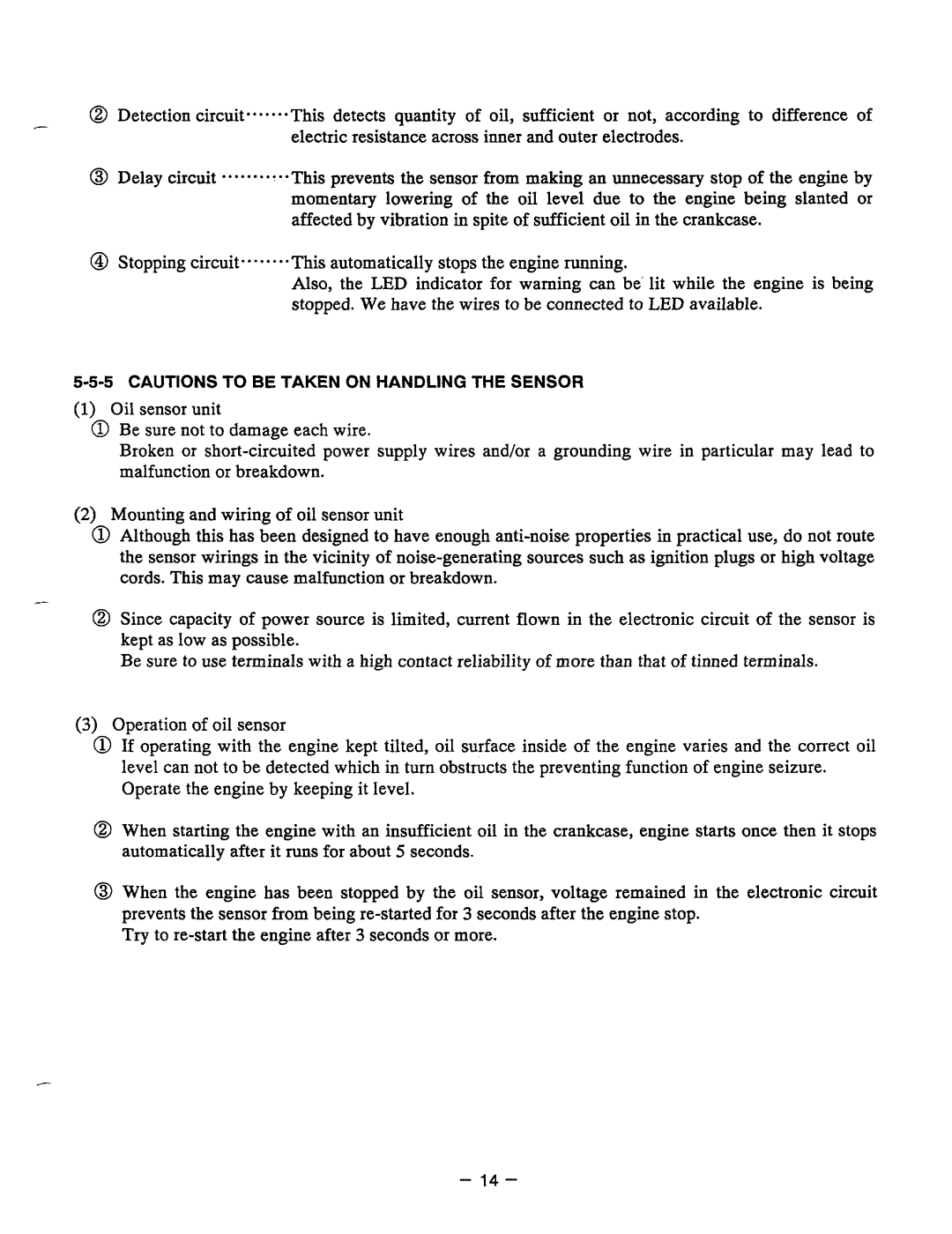
@Detection
Delay circuit ** . * . - ** . - * This prevents the sensor from making an unnecessary stop of the engine by momentary lowering of the oil leveldue to theenginebeing slanted or affected by vibration in spite of sufficient oilin the crankcase.
@stopping circuit -
Also,theLED indicator forwarningcanbe’ lit whiletheengine is being stopped. We have the wires to be connected to LED available.
5-5-5 CAUTIONS TO BE TAKEN ON HANDLING THE SENSOR
(1) Oil sensor unit
0Be sure not to damage each wire.
Broken or
(2) Mounting and wiring of oil sensor unit
0Although this has been designed to have enough
”
@ Since capacity of power source is limited, current flown in the electronic circuit of the sensor is kept as low as possible.
Be sureto use terminals with a high contact reliability of more than that of tinned terminals.
(3) Operation of oilsensor
0If operating with the engine kept tilted, oil surface inside of the engine varies and the correct oil level can not to be detected which in turn obstructs the preventing function of engine seizure. Operate the engine by keeping it level.
@When starting the engine with an insufficient oil in the crankcase, engine starts once then it stops automatically after it runs for about 5 seconds.
@When theenginehas been stopped by theoil sensor, voltage remained in theelectronic circuit
prevents the sensor frombeing
- 14 -
